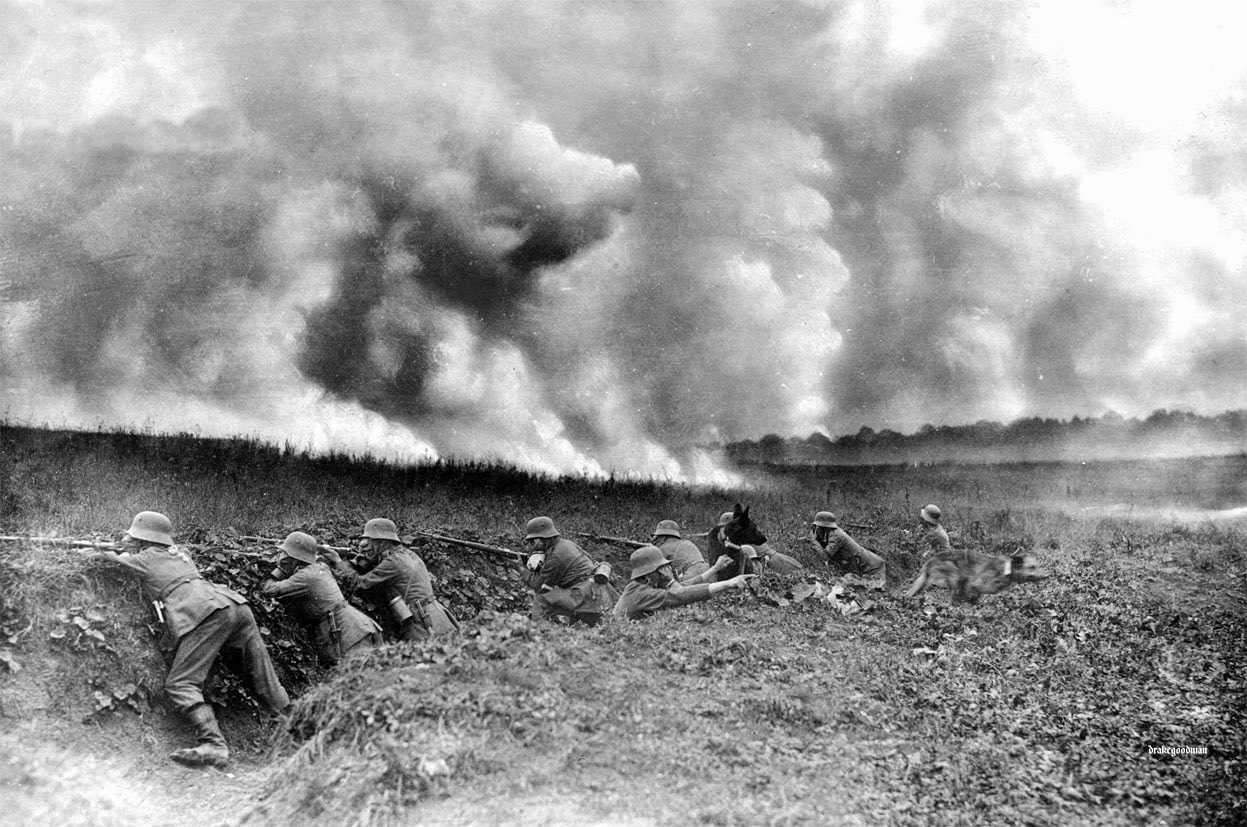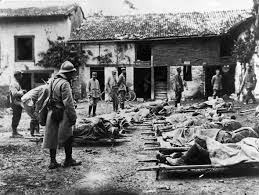Despite Extensive Use of Poison Gas,
British and French Offensives Fail.
At Loos, A Field of Corpses
Special to The Great War Project
(25 September) On this day one hundred years ago on the Western Front, British and French forces unleash a major offensive at the northern French towns of Loos and Champagne.
For the first time, in both sectors, the Allies make extensive use of poison gas.
“The British,” writes historian Martin Gilbert, “released 150 tons of chlorine across No-Man’s land, from 5,243 gas cylinders. As a direct result 600 German soldiers were killed.”
Still. the Germans are ready for the attack.
“The effectiveness of the Germans’ preparations was proved all too painfully,”
…writes military historian John Keegan.
“At Loos the gas hung about in no man’s land or even drifted back into the British trenches,” reports Keegan, “hindering rather than helping the advance.”
In fact most of the tactics the British employ at Loos are a disaster.
The six British divisions are “quickly stopped by machine guns.” But their forces are ordered to continue moving forward.
They move in ten columns, “each of about a thousand men, all advancing as if carrying out a parade-ground drill.”
Reports Keegan, “The German defenders are astounded by the sight of an entire front covered with the enemy’s infantry.”
The Germans stand up, “some even on the parapet of the trench, and fired triumphantly into the mass of men advancing across the open grassland.”
“Never had machine guns had such straightforward work to do…with barrels becoming hot and swimming in oil, to and fro along the enemy’s ranks; one machine gun alone fired 12,500 rounds that afternoon.”
“The effect was devastating,” observes Keegan.
The British “could be seen falling literally in hundreds…
…but they continued their march in good order and without interruption, until they reached the unbroken wire of the Germans’ second position.”
The survivors finally turned around and pulled back.
“The death toll at Loos exceeded in intensity that of any previous battle,” writes historian Gilbert. More than 8,000 of the 15,000 infantry thrown into this battle are killed or wounded.
According to historian Keegan, “Their German enemies, nauseated by the spectacle” of what they called the corpse field of Loos, “held their fire as the British turned in retreat, “so great was the feeling of compassion and mercy after such a victory.”
The Germans defeat the British in the Battle of Loos. For the British there, and equally for the French in Campagne, the offensives, according to Keegan, are pointless in strategic terms.
“The Germans had shown that they had learnt much about the methods of defending an entrenched front, the Allies that they had learnt nothing about means of breaking through.”
All in all, a bitter lesson in Keegan’s view.



